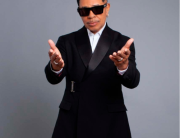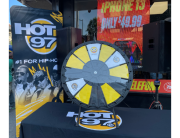Slip-ons are typically low, lace-less shoes.
The style which is most commonly seen is known as a loafer. They began as casual shoes, but have increased in popularity to the point of being worn in America with business suits. Another design was introduced as Aurlandskoen in Norway (early 20th century). They are worn in many situations in a variety of colors and designs, often featuring tassels on the front.
| Wildsmith | 1926 | Raymond Lewis Wildsmith was asked to create a country house shoe. Initially called the 582, now widely known as the Wildsmith Loafer. | Serrated seam and reinforced toe box. Vertical stitching on toe. |
| Aurland | 1930 | Shoemaker Nils Gregoriussen Tveranger combined the Native American moccasin with shoes worn by local fishermen, in the town of Aurland, Norway. The Aurland Moccasin was born. | Raised seam on upper, similar to a moccasin. Narrow cut out on the saddle. |
| Penny | 1936 | G.H. Bass of Wilton, Maine, launched a loafer called the ‘Weejun’ (from ‘Norwegian’). It became very popular in the U.S, especially among prep school students, who legend states kept pennies in the saddle slot for pay phone calls. Hence the name ‘penny loafers’. | Leather ‘saddle’ strap across upper, with cut out big enough to hold a penny. |
| Kilted | 1950s | Kilties have been fashioned upon brogues and Oxfords by Scottish ghillies, kings, and golfers for over 100 years. The loafer got kilted in the 1950s when Kiltie golf shoes and penny loafers were at their fashion zenith. Also popular with Mods and skinheads. | Kilt style over-the-vamp flap, secured by leather string or tassels. |
| Horse Biti | 1953 | Italian designer Aldo Gucci refined the lines, added a gold horse bit, and made them in black. This elevated the loafer to formal wear status. While this design was pioneered by Aldo Gucci the horse bit loafer is produced by a wide variety of shoe makers today. | Horse bit style metal link. |
| Belgian | 1954 | Henri Bendel sold his family shoe store and bought two 300yr old shoe factories in Belgium. His loafers became an instant hit, and the bow was easily recognizable. His work earned him two knighthoods. | Small bow on top and sewn inside out to create a fine seam. |
| Tassele | 1957 | Brooks Brothers and Alden Shoe Co collaborated to produce the popular tasseled loafer. Originally a bespoke commission by actor Paul Lukas who liked the tasseled shoelaces on a pair of Oxfords. | Tassels are held in place by a leather strand. |
In the United States and some European countries, such as Italy, the loafer enjoys general use as a casual and informal shoe worn for work and leisure, though lace-ups are still preferred for more formal situations. The general popularity of brown over black extends to loafers, sometimes using exotic leathers such as suede and cordovan. Since the early 1980s, socks have been optional while wearing loafers. Some styles of loafers, such as casual tassels and penny loafers, are also worn by women.







Add Comment
You must be logged in to post a comment.